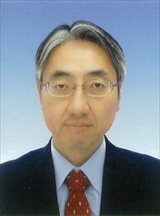Masakazu Kawashita
Bioactive Titanium with Visible-Light Induced Antibacterial Activity
M. Kawashita1, N. Endo1, T. Watanabe2, T. Miyazaki3, M. Furuya4, K. Yokota4, Y. Abiko4, H. Kanetaka4, N. Takahashi4
1Graduate School of Biomedical Engineering, Tohoku University, Japan
2School of Science and Technology, Meiji University, Japan
3Graduate School of Life Science and Systems Engineering, Kyushu Institute of Technology, Japan
4Graduate School of Dentistry, Tohoku University, Japan
 Postoperative infection is a serious problem that occurs because of the growth of bacteria on the surface of metallic orthopedic implants. Therefore, it is desirable to develop antibacterial, biocompatible metallic implants in order to minimize the incidence of surgical site infection and thus minimize the need for implant replacement. It is expected that titanium oxide (TiO2) doped with some minor elements such as nitrogen (N) can show antibacterial activity under visible light by visible-light induced photocatalytic activity and TiO2 with specific crystalline structure can bond to living bone. We have been attempted to form N-doped TiO2 on titanium by chemical and thermal treatments. Actually, when titanium was subjected to NaOH, hot water and heat treatments in ammonia atmosphere, N-doped anatase-type TiO2 with fine network structure was formed on its surface, and the resultant titanium formed apatite in simulated body fluid and showed excellent antibacterial activity against E. coli under visible light irradiation. We believe that the present surface modification provides novel bioactive titanium with visible-light induced antibacterial activity.
Postoperative infection is a serious problem that occurs because of the growth of bacteria on the surface of metallic orthopedic implants. Therefore, it is desirable to develop antibacterial, biocompatible metallic implants in order to minimize the incidence of surgical site infection and thus minimize the need for implant replacement. It is expected that titanium oxide (TiO2) doped with some minor elements such as nitrogen (N) can show antibacterial activity under visible light by visible-light induced photocatalytic activity and TiO2 with specific crystalline structure can bond to living bone. We have been attempted to form N-doped TiO2 on titanium by chemical and thermal treatments. Actually, when titanium was subjected to NaOH, hot water and heat treatments in ammonia atmosphere, N-doped anatase-type TiO2 with fine network structure was formed on its surface, and the resultant titanium formed apatite in simulated body fluid and showed excellent antibacterial activity against E. coli under visible light irradiation. We believe that the present surface modification provides novel bioactive titanium with visible-light induced antibacterial activity.